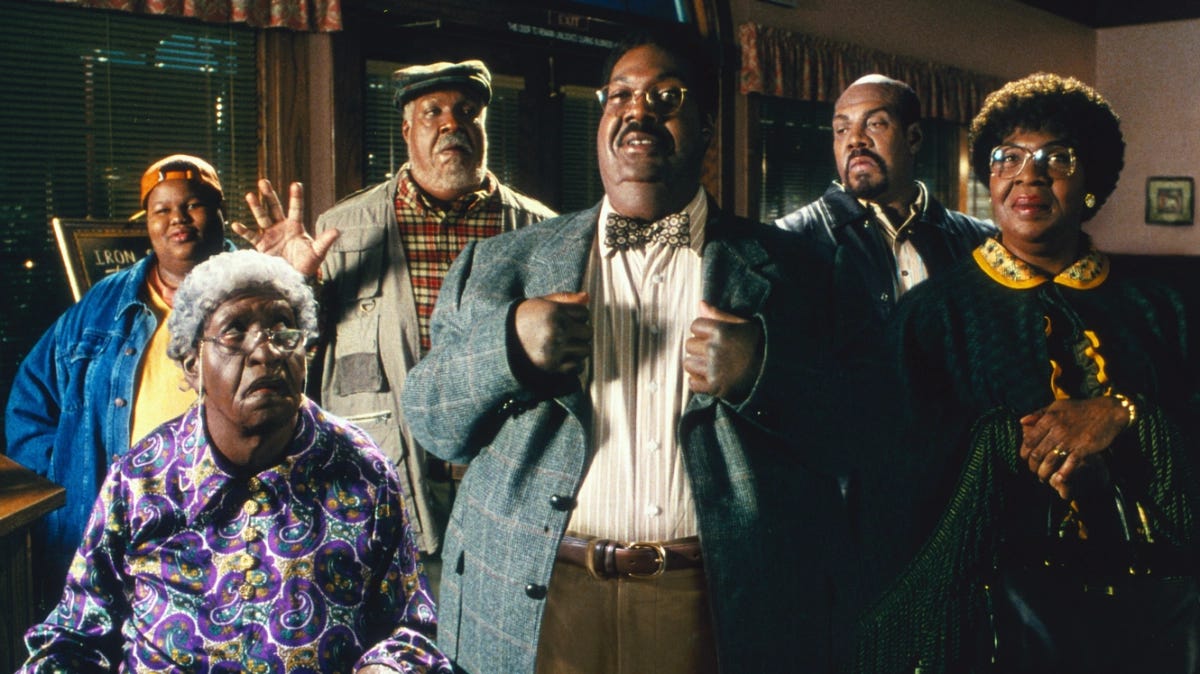Which Movies Have "Aged Poorly"? A Statistical Analysis
Which films have not stood the test of time?
Intro: The Birth of a Nation
How much harm can one film cause? In the case of D.W. Griffith's Birth of a Nation, the answer is quite a lot.
The Birth of a Nation is a 1915 silent film that depicts America's Civil War and Reconstruction through the intertwined lives of two families. Sounds pretty innocuous, right?
Well, the film also presents a glorified depiction of the Klu Klux Klan (KKK), portraying the KKK as heroic protectors of the American South while also perpetuating racial stereotypes about African Americans.
That's truly awful, but it's only one film—how much harm can a single movie cause? Assuming you are anti-Klan, the answer is an incredible amount of harm. The Birth of a Nation played a central role in the resurgence of the Klu Klux Klan in the early 20th century, officially inspiring William J. Simmons to reestablish the then-defunct KKK in 1915 with a cross-burning ceremony in Stone Mountain, Georgia. The film was subsequently used as a Klan recruitment tool for decades, helping the KKK re-grow its membership by millions in the 1920s while also inciting racial violence and riots in communities where it was screened.
D.W. Griffith was so regretful of the movie's reception that he produced a film called Intolerance as a half-hearted mea culpa. Despite his later contributions to cinema, Griffith's legacy remains overshadowed by the profound harm caused by Birth of a Nation—which I think is fair.
The Birth of a Nation is a notorious example of a film that faced immediate backlash upon release and has grown more problematic with each passing day. That said, most films that earn the distinction of "aging poorly" tend to follow a more subtle trajectory (since few can match the infamy of a movie that revived a violent hate group). In most cases, films experience a gradual reevaluation based on shifting societal standards, evolving moviegoer appetites, or the infamous actions of their filmmakers (Kevin Spacey, Harvey Weinstein, etc.).
A movie is produced over the course of three to four months, consumed in theaters for a few weeks, and then persists as a living document for the rest of time, subject to reinterpretation and reappraisal. So today, we'll explore the movies that have undergone radical reassessment over the past three decades—both positively and negatively—and examine the forces that drive these ever-changing sentiments.
Which Films Have Aged Poorly (and Why)?
MovieLens first began collecting online film reviews in 1995. To date, this film discovery site has collected over 32 million movie ratings, offering a valuable snapshot of evolving viewer appetites.
If 1995 to the present doesn't seem like enough time for a meaningful shift in viewer attitudes, imagine trying to explain the following phenomena to someone from the mid-90s:
Cryptocurrency
Twitch
What a Twitch or TikTok influencer does
That Donald Trump is the president of the United States
That Donald Trump has his own cryptocurrency
To gauge shifts in audience sentiment, we'll analyze how a movie's average star rating changes over time.
On average, a film's critical reputation gradually declines in the years following its debut, with later audiences rating a work ~4% lower than those who saw the movie upon release.
The laziest explanation for this trend is that future generations have inferior movie tastes—if you're feeling extra cynical today, that can be your main takeaway.
More likely, this pattern is driven by who sees a movie and when. Take Caddyshack, for example: I'm not a fan, but every dad I know seems to think this film was delivered by divine intervention. Sure, the dancing gopher is amusing, but the humor feels dated—often mean-spirited—and Rodney Dangerfield's schtick doesn't resonate with me. I'm not particularly fond of raunchy comedy classics from the 1980s since I'm not their target audience. Caddyshack's intended audience was the onslaught of teenage dudes who flocked to theaters during the movie's opening weekend—teens who have since evolved into dads.
Rest assured, one day I'll be on the receiving end of this same critique, with some pithy culture critic casually dismantling the Apatow films that shaped my adolescence (Superbad, Forgetting Sarah Marshal, etc.). This takedown will completely upend my sense of self, and I've come to terms with this inevitability.
To identify movies that experienced a quantifiable reappraisal, we'll compare a project's average MovieLens rating across two separate periods:
Pre-Social Media: 1995 to 2004
Recent Times: 2018 to 2023
Our list of movies with the greatest decline in viewer acclaim is headlined by an eclectic mix of outdated comedies, gimmicky documentaries, and films that conflict with contemporary racial attitudes.
In the case of Birth of a Nation, my million-dollar question concerns a hypothetical group of movie watchers whose opinions shifted between the late 1990s and early 2020s—what changed?! I could go deeper, but I'd rather avoid half this essay being dedicated to Birth of a Nation.
Then there's Song of the South, a 1946 Disney film that has drawn increasing criticism in modern times for racially insensitive content, prompting Disney to overhaul its Splash Mountain theme park ride (which is based on elements of this movie). Song of the South also gave us the song "Zippity Doo Dah"—though Disney would prefer you not know that.
And then we have Crash, which has become cultural shorthand for a bad Best Picture winner (along with Shakespeare in Love)—undergoing a near-immediate reappraisal within five minutes of winning an Academy Award.
This list offers ample fodder for film nerds—I haven't even touched on Michael Moore's bizarre cultural moment in the early 2000s or the sheer lunacy of the animated film Antz. Needless to say, this is a worthy group of "poorly aged" films.
While most movies see their acclaim gradually diminish over time, there are exceptions. Some films are reclaimed by later audiences who appreciate elements overlooked by contemporary viewers.
When we reverse our rankings to highlight movies with rising ratings over the past three decades, we find a collection of sequels and cult classics.
I'll start with cult classics like Twin Peaks: Fire Walk With Me, American Psycho, and Eyes Wide Shut—movies that confused audiences at the time of their release but have subsequently experienced a critical reclamation. I'm surprised David Lynch only has one movie on this list (Twin Peaks), given that many of his works can only exist as cult objects (i.e., Lost Highway, Wild at Heart).
It's perplexing that so many sequels have "aged well." Don't people generally dislike Hollywood's reliance on franchise storytelling? Maybe. However, this sentiment does not reflect the perspectives of those who've revisited these sequels over the past five years. My best guess is that people are consuming these films as part of a broader franchise rewatch. Those who like Back to the Future or Home Alone are returning to the entire series and rating all titles generously. My other theory is that children—who weren't posting online reviews in the late 1990s—are revisiting (and rating) the films of their youth. Early ratings come from reluctant parents who had to sit through these movies, while later reviews capture the nostalgia-fueled enthusiasm of a now-grown target audience.
Certain story formats and movie concepts lend themselves to a kinder legacy. For instance, some genres endure better than others. According to our rating-change data, horror movies "age" notably well, while comedy and drama see a marked decline in appraisal over time.
Horror is not beholden to contemporary social norms; in fact, it deliberately subverts mainstream depictions of violence and sexuality. John Carpenter's Halloween remains perpetually relevant because it challenged traditional storytelling conventions in the late 1970s. Plus, the horror genre has a dedicated fandom that continually rewatches the same films every October, further buoying their legacy.
Comedy and drama, on the other hand, are heavily tied to contemporary tastes. Crash and Nutty Professor—which were popular in their time—mine dramatic tension and comedic material from outdated storytelling tropes. The Nutty Professor, in particular, marks the pinnacle of cinematic fart humor, featuring multiple scenes where characters fart for like three minutes. People in the mid-90s thought this gag was pure cinema. Present day, I can't remember the last sustained fart-centric sequence showcased in a film. Perhaps farting is no longer funny.
Enjoying the article thus far and want more data-centric pop culture content?
Final Thoughts: The Omnipresence of Super Size Me
When people think of a film that has "aged poorly," they envision cancel culture controversies or headline-grabbing titles that dominate a news cycle or two. However, once you move past this handful of high-profile examples, you'll find a long list of films that no longer resonate with modern movie-watching tastes (and are not controversial).
Consider Super Size Me, a once omnipresent documentary where filmmaker Morgan Spurlock ate nothing but McDonald's for 30 days. I had the fortune—or perhaps misfortune—of being in my early teens when this movie was released. All the adults in my life were losing their minds at the revelation of McDonald's being unhealthy—though I don't understand why it took this particular film to make such a convincing case.
I was then forced to watch this fairly compelling documentary over and over again:
My parents made me watch it
My Health class made us watch it
We watched this film in Physical Education
We rewatched this movie in Health class when we had a substitute teacher
All told, I saw this film no fewer than five times in two years. After my first watch, I got the gist: McDonald's = bad. By my fifth viewing, I started feeling sympathy for McDonald's.
Years later, Super Size Me plays as quaint. We are living in a post-Super Size Me world where the novelty (read: gimmick) underlying the documentary's premise is no longer shocking, nor is the revelation that McDonald's is unhealthy.
Furthermore, this style of documentary filmmaking—where a filmmaker puts themselves in a compromising scenario in service of some heavy-handed social commentary (and shock value)—is no longer popular. This approach to storytelling died with Vice and the rise of YouTube.
What's left is a film that reads as outdated and obvious, that was so effective and so widely digested that it eventually rendered itself irrelevant. That said, if you asked thirteen-year-old me how this movie would "age," I'd have guessed that Super Size Me would remain an enduring staple of the Great American Film Canon—and that I'd be forced to watch this documentary at least 20 times before I die.
Contemporary praise does not guarantee enduring acclaim, nor does a poor initial reception doom a film to obscurity. In general, it's difficult to predict how a film's legacy will evolve—unless, of course, that movie single-handedly reinvigorates a violent hate group.
Struggling With a Data Problem? Stat Significant Can Help!
Having trouble extracting insights from your data? Need assistance on a data or research project? Well, you’re in luck because Stat Significant offers data consulting services and can help with:
Insights: Unlock actionable insights from your data with customized analyses that drive strategic growth and help you make informed decisions.
Dashboard-Building: Transform your data into clear, compelling dashboards that deliver real-time insights.
Data Architecture: Make your existing data usable through extraction, cleaning, transformation, and the creation of data pipelines.
Want to chat? Drop me an email at daniel@statsignificant.com, connect with me on LinkedIn, reply to this email, or book a free data consultation at the link below.
Want to chat about data and statistics? Have an interesting data project? Looking to produce data-centric editorial content? Email daniel@statsignificant.com









I unapologetically adore Shakespeare in Love, so it's unfortunate that it's been tainted by Weinstein. Proof that good movies can age poorly under bad circumstances!
Super Size Me had some other issues as well: https://www.themarysue.com/super-size-me-controversy-explained/